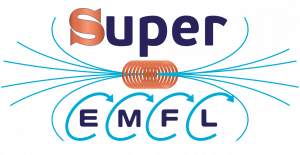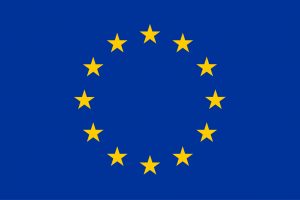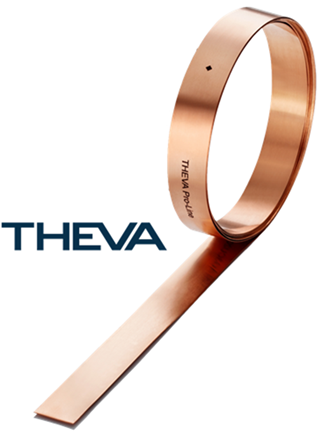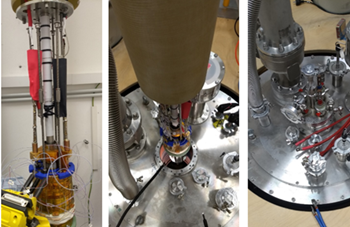SuperEMFL – a Horizon 2020 project


SuperEMFL successfully finished

Picture of an HTS insert made of a stack of 9 double HTS pancakes. The strips flying around are the potential taps used to characterized the insert.
The SuperEMFL project has generated specific know-how, models, the design of 32+ and 40+ T all-superconducting user magnets (TRL 7), and a scenario for implementing such equipment within EMFL as main outcomes.
The use of HTS inserts to generate field efficiently introduces a change of paradigm. New experimental possibilities are expected, in particular long duration and very low-noise experiments. The large resulting reduction of operating costs for static high-field experiments will also considerably increase the EMFL capacity to host user experiments. The improvement of the EMFL environmental impact as well as the optimization of resources and energy are some major benefits of the project.
The development of HTS technology is now widely competitive with projects aiming at 40 T in Europe, the USA, and China. We are reaching other communities beyond EMFL throughout workshops and conferences, which show their strong interest by submitting their own projects to leverage the HTS technology, i.e., neutron-scattering facilities, CERN with its Muon Collider project, and the fusion community.
We expect innovation impacts by opening the magnetic-field range
beyond the current limit of commercial superconducting fields, to give the industrial partners a competitive advantage, understanding and modeling the quench events in HTS magnets and opening the high magnetic fields as a research tool to the bio and life sciences. This project is a showcase for Oxford Instruments LTS outserts and for THEVA tapes.
We have trained several PhD students and post-doctoral fellows throughout SuperEMFL, increasing their skills and value on the labor market, but also helping to prepare a future generation for HTS technology that will allow Europe to play an important role in this strategic technology.

Picture of a HTS tape provided by the project partner Theva. The tape is about 70 µm thick, 6 mm wide and several 100 m long. This highly functionalized conductor is a stack of a mechanical Hastelloy substrate, several ceramic buffer layers, a REBaCuO superconducting layer (only 1-3 µm thick) and a protecting silver layer, the whole being encapsulated in a surrounding copper layer several tens of µm thick.

Pictures of an HTS insert mounted on its mechanical support (left), of this support being introduced into the LTS outsert (middle) and the top of the resulting LTS/HTS magnet (right). Pictures of an HTS insert mounted on its mechanical support (left), of this support being introduced into the LTS outsert (middle) and the top of the resulting LTS/HTS magnet (right).
Superconducting magnets for the European Magnet Field Laboratory
The SuperEMFL project started on the 1st of January 2021 and will last four years. It is a Horizon2020 European project, coordinated by the laboratory LNCMI of the CNRS France.
The SuperEMFL design study aims to add through the development of the high temperature superconductor (HTS) technology an entirely new dimension to the European Magnetic Field Laboratory (EMFL) that go beyond the commercial offer, providing the European high field user community with much higher superconducting fields and novel superconducting magnet geometries. In this way, current high-field resistive magnets can be partly replaced and the result will be a significant reduction of the energy consumption, improving financial and ecological sustainability of the static field EMFL facilities.
More specifically, the high field values, the very low noise and vibration levels, and the possibility to run very long duration experiments will make high superconducting magnetic fields attractive to scientific communities that so far have rarely used the EMFL facilities (NMR, scanning probe, Fourier transform infrared spectroscopies, ultra-low temperature physics, electro-chemistry…). All these new research possibilities will strengthen the scientific performance, efficiency and attractiveness of the EMFL and thereby of the European Research Area (ERA).
Aknowledgement
 This project has received funding from the European Union’s Horizon 2020 research and innovation programme under grant agreement No 951714. Any dissemination of results reflects only the author’s view and the European Commission is not responsible for any use that may be made of the information it contains.
This project has received funding from the European Union’s Horizon 2020 research and innovation programme under grant agreement No 951714. Any dissemination of results reflects only the author’s view and the European Commission is not responsible for any use that may be made of the information it contains.

